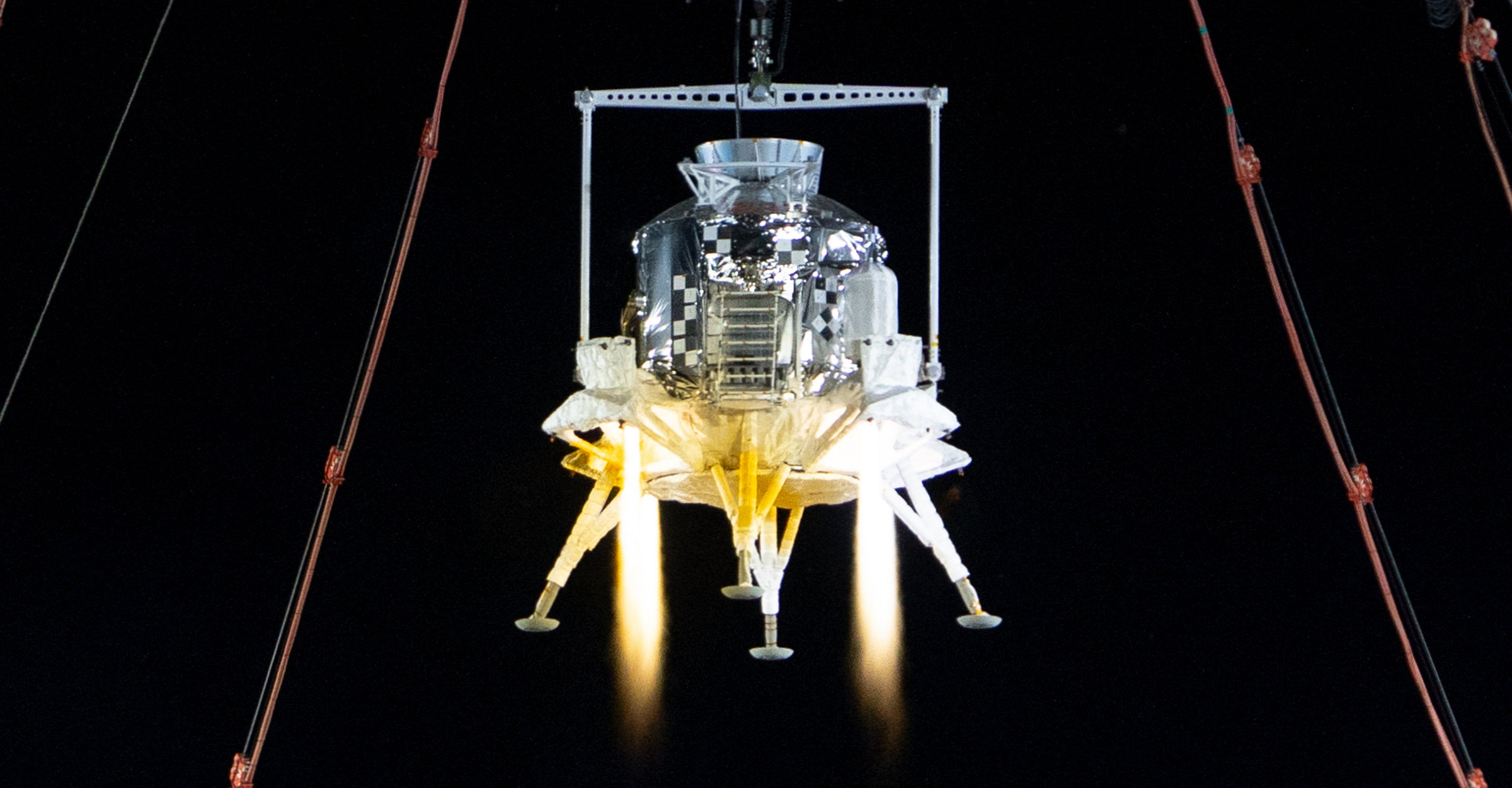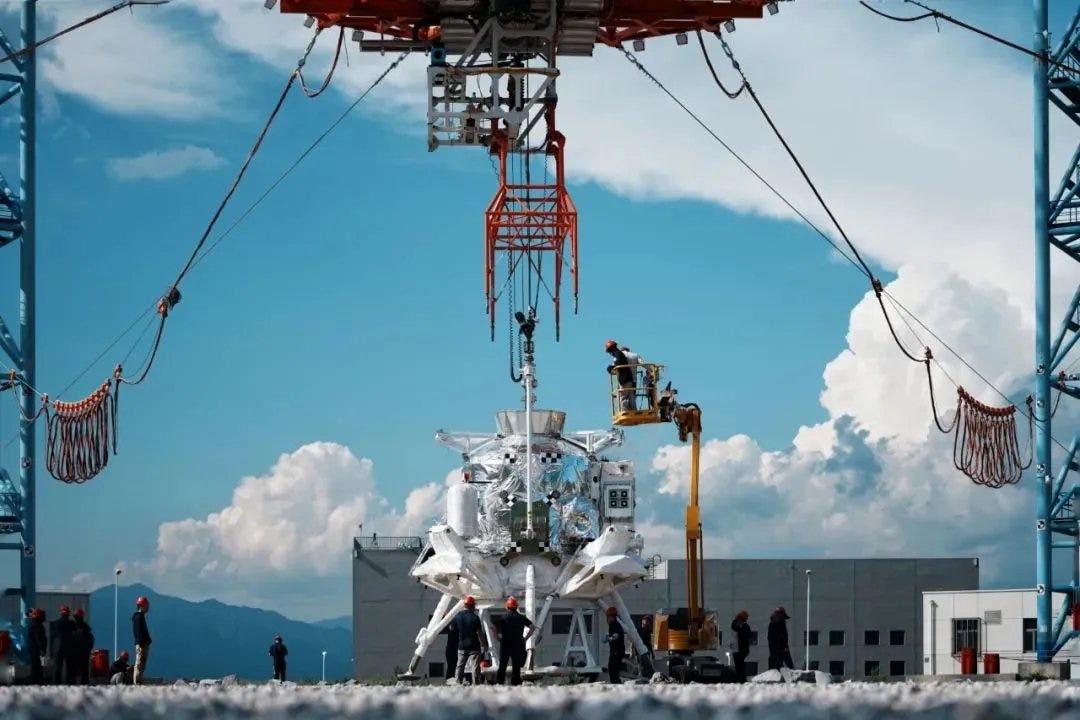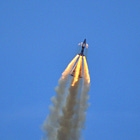Lanyue Lunar Lander Conducts Simulated Landing, Takeoff Tests
Taikonaut's are one step closer to the Moon's surface.
China’s various space agencies and enterprises shared on August 7th that the day prior, a series of tests with the Lanyue lunar lander were completed. The test took place with a purpose-built extraterrestrial gravity simulator, previously used to test robotic Moon and Mars missions, in Huailai County (怀来县), in Hebei province (河北).
In its test, a full-scale Lanyue vehicle outfitted with its various thrusters and four main engines, without their nozzles for vacuum optimization, flew within the gravity simulator to verify control coordination across the many thrusters. General guidance, navigation, and control systems were tested too. Sun Xingliang (孙兴亮), from China Aerospace Science and Technology Corporation, shared what tests were performed:
“Among these, ignition tests are the top priority. The tests needed to complete over 10 ignition tests including normal flight, emergency flight, and takeoff from different lunar surface slopes, fully verifying the lander's landing and takeoff control scheme, propulsion system, electrical system, and interface compatibility between systems.“
In total, over ten tests across various flight modes were performed to validate the design of the lunar spacecraft.
In announcing test success, the China Manned Space Agency’s statement for the test disclosed some more details and context, which is as follows:
“The Lanyue lunar surface lander's integrated landing and takeoff verification test was successfully completed at the extraterrestrial body landing test site located in Huailai County, Hebei Province. This test marks China's first landing and takeoff trial of a crewed spacecraft for extraterrestrial bodies. The test involved multiple operating conditions, a long test cycle, and high technical difficulty, representing a key milestone in China's crewed lunar exploration program development work.”
“The Lanyue lunar surface lander is China's newly developed crewed descent and ascent vehicle for extraterrestrial bodies, designed specifically for the first crewed lunar exploration mission. It consists of a lunar module and propulsion module, primarily used for astronaut transportation between lunar orbit and the lunar surface. It can carry two taikonauts for round trips and can transport lunar rovers and scientific payloads. It serves as the astronauts' lunar surface living center, power center, and data center after landing on the Moon, capable of supporting lunar surface habitation and activities.”
“The comprehensive landing and takeoff verification test systematically validated the lunar surface landing and takeoff system design, control schemes, lunar touchdown engine shutdown procedures, and interface compatibility between subsystems such as [Guidance, Navigation, and Control] and propulsion. The complete success of this test marks a new important breakthrough in China's crewed lunar exploration program development work.”
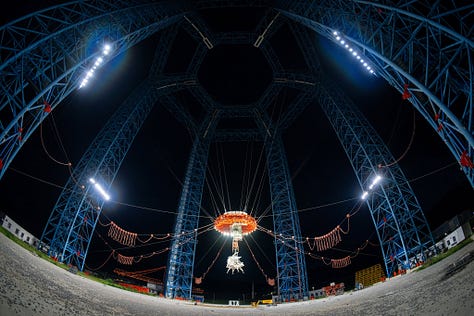
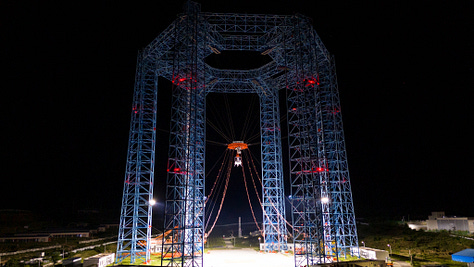
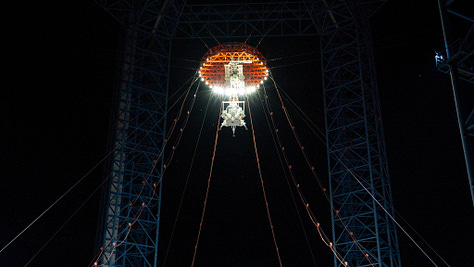
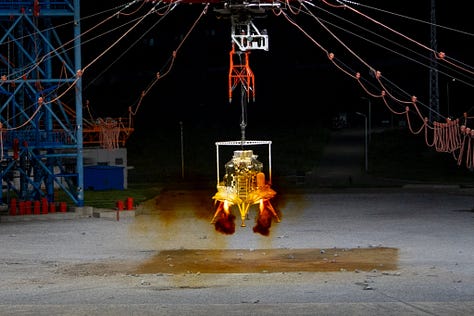
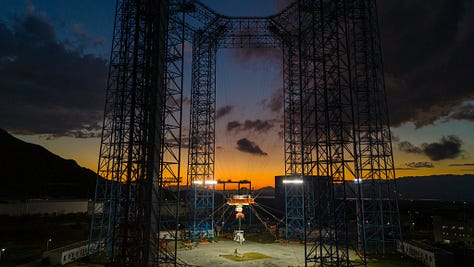
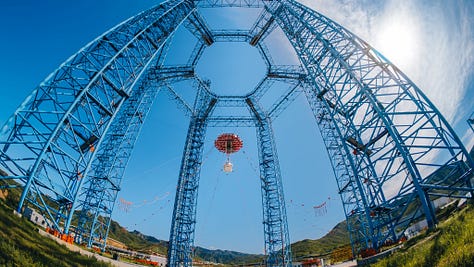
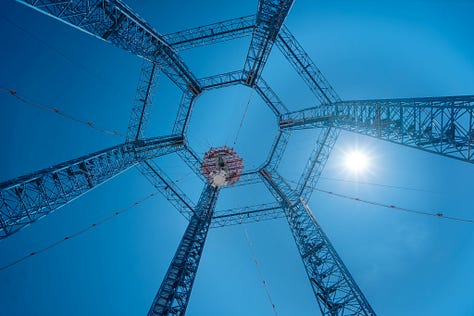
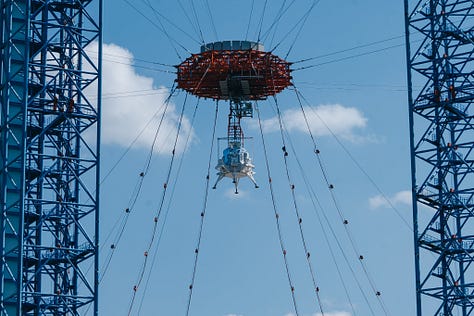

The China Academy of Space Technology, another state-owned space enterprise involved with developing the spacecraft, released an identical statement. Timelines for further testing plans for Lanyue were not shared by any involved entities. But Sun Xingliang added that follow-on tests are planned to be:
“With the success of this test, the correctness of the lander's landing and takeoff system scheme and related product design, as well as interface compatibility, have been fully tested and verified, laying the foundation for the flight model phase and successful execution of on-orbit missions. In subsequent development processes, they will also coordinate with spacecraft, launch vehicles, and other systems for testing and verification to ensure the overall mission can be implemented smoothly.”
Additionally, ahead of carrying taikonauts, a robotic demonstration mission will likely be needed to validate both the braking stage (used to enter lunar orbit and power much of the descent) and final descent to the Moon. After that, China may opt for an Apollo 10-like mission or move on to landing two taikonauts.
At the moment, China’s first lunar landing is currently set for before 2030, with the official deadline likely in October 2029 for the eightieth anniversary of the founding of the People’s Republic of China. It is possible that a landing may occur months before that to ensure the lunar mission system works, before moving to having a crew on the lunar surface during the anniversary.
Test video via 央视新闻 and 卡尔达瓦里希.
Lunar hardware so far
The first looks of the near-finalized designs of the Mengzhou crew capsule and Lanyue lunar lander were shared back in November 2024. Progress on Lanyue has been quieter due to the nature of the vehicle, needing to be understood in a lunar gravity environment and only in space; however, Mengzhou performed a dramatic test in June. On June 17th, Mengzhou conducted its zero-altitude launch escape test to demonstrate the vehicle’s ability to quickly and safely depart the launch site in the event of an emergency.
For surface operations, the Wangyu (望宇) lunar spacesuit and Tansuo (探索) rover are actively in development too. Not many details on Tansuo are known, other than it’s being tested with crew and that it will carry two taikonauts several kilometers. The Wangyu lunar spacesuit however was shown off in September 2024, with a demonstration of the suit’s movement via walking, crouching, kneeling, and climbing a ladder.
Although hardware is still under intensive development, China’s taikonauts have already begun training for lunar missions for months. Initial missions to the Moon are expected to have their crews consist of taikonauts who have spent several months in space. This training is said to involve landing procedures and activities for surface operations, including collecting samples and deploying experiments.



